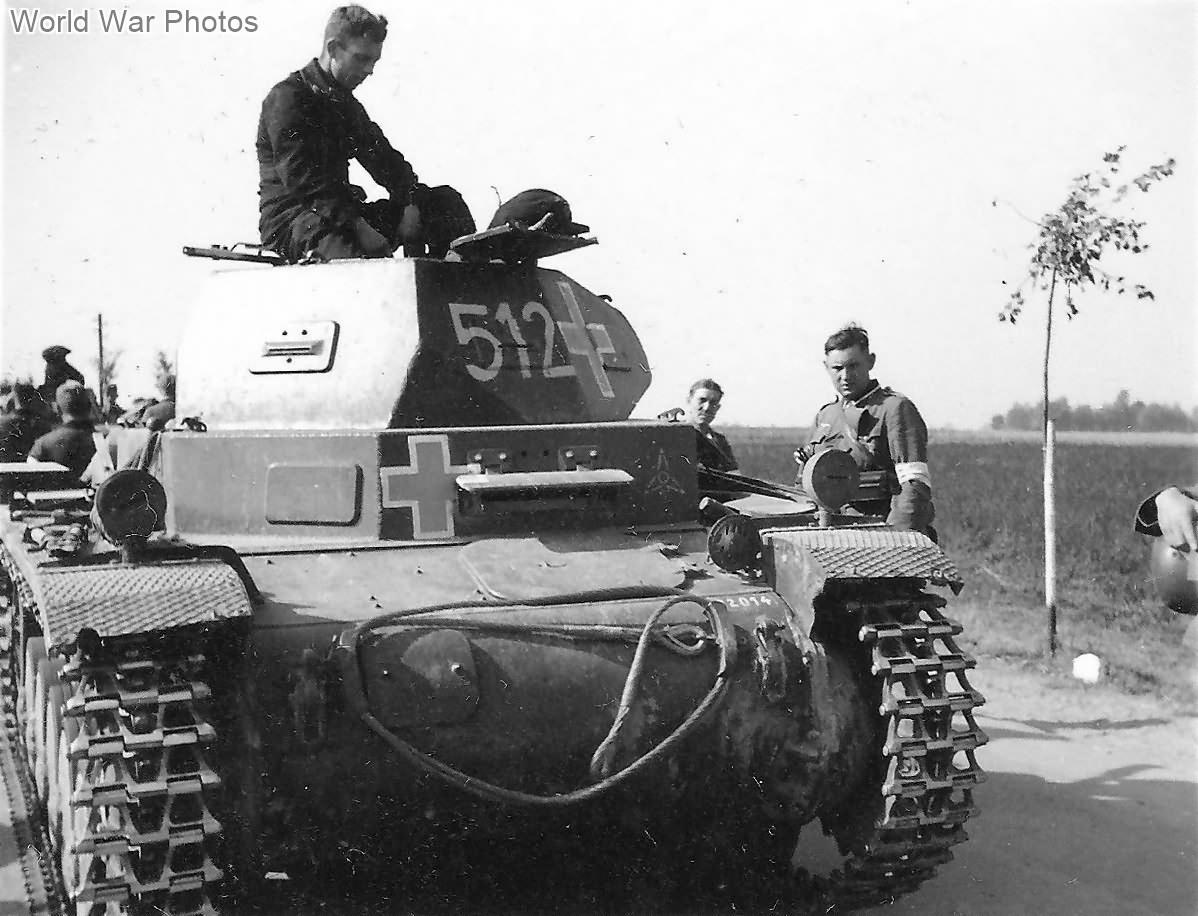The 4th Panzer Division was one of the early armored formations of the German Army, formed in Würzburg in 1938. It participated in several critical campaigns during World War II, including the invasions of Poland, France, and the Soviet Union, and remained on the Eastern Front for the majority of the war.
Formation and Early History
- Formed: On November 10, 1938, in Würzburg, after the relocation of the 2nd Panzer Division to Vienna. The division was initially composed of the following units:
- Panzer Brigade 5 with Panzer Regiments 35 and 36, each with two battalions.
- Motorized Rifle Brigade 4, with Rifle Regiments 12 and 33, and a Motorcycle Battalion.
- Aufklärung Abteilung 7 (Reconnaissance).
- Artillerie Regiment 103 (Artillery).
- Divisional units numbered 84.
Combat History
Poland (1939)
- The division participated in the Invasion of Poland in September 1939, as part of the German Army’s swift and brutal Blitzkrieg tactics, contributing to the rapid defeat of Polish forces.
France (1940)
- In the Flanders-France Campaign (May-June 1940), the 4th Panzer Division played a key role in the invasion of France and the Low Countries, advancing through Belgium and contributing to the defeat of French and British forces during the Battle of France.
Eastern Front (1941-1945)
- Operation Barbarossa (June 1941): The 4th Panzer Division was assigned to Army Group Center and fought continuously on the Eastern Front from the start of the invasion of the Soviet Union.
- Kursk (July 1943): The division took part in the northern pincer of the famous Battle of Kursk, a decisive tank battle, and after the failure of the offensive, it was involved in heavy defensive battles in the Gomel area.
- Gomel and Retreat to Latvia (1943-1944): Following Kursk, the division engaged in defensive actions, fighting around Gomel in Belarus before being pushed back toward Latvia in the summer of 1944 as Soviet forces advanced.
1945 Campaigns and Surrender
- In early 1945, the division was moved back into Germany. The remnants of the division surrendered to American forces later in the war after fighting in Germany proper, notably in West Prussia and later on the Frische Nehrung.
Organizational Structure
The division went through several reorganizations during the war. By its final establishment, the structure was as follows:
- Panzer Aufklärungs Abteilung 4 (Reconnaissance).
- Panzer Regiment 35 (Two battalions).
- Panzergrenadier Regiment 12 (Two battalions).
- Panzergrenadier Regiment 33 (Two battalions).
- Artillerie Regiment 103 (Three battalions).
- Heeres Flak Abteilung 290 (Anti-aircraft).
- Panzerjäger Abteilung 49 (Tank destroyers).
- Nachrichten Abteilung 79 (Signals).
- Panzer Pioniere Bataillon 79 (Engineers).
- Divisional Headquarters and services.
Key Changes and Developments
- In October 1940, the division was reorganized to provide elements, including Panzer Regiment 36, for the newly formed 14th Panzer Division.
- In 1942, the Aufklärung Abteilung 7 was merged with the Motorcycle Battalion 34 and renamed Panzer Aufklärungs Abteilung 4.
- By November 1943, Panzer Regiment 35 was restored to a two-battalion establishment, after briefly being reduced.
- In 1944, the division absorbed Grenadier Regiment 1071 (“Brünhilde formation”), which was later dissolved.
Final Phase
- In January 1945, before its final operations, the division was refreshed and reorganized, receiving new Field Post numbers.
- The division was involved in the defense of West Prussia, and its remnants were eventually captured by Soviet forces after being cut off on the Frische Nehrung.
Campaign Highlights
- 1939: Blitzkrieg in Poland.
- 1940: Battle of France.
- 1941-1944: Continuous combat on the Eastern Front, from Barbarossa to Kursk and the retreats through Belarus and Latvia.
- 1945: Final defense and eventual surrender in Germany.
The 4th Panzer Division was one of the most enduring armored units in the Wehrmacht, known for its early successes in Poland and France, followed by grueling combat on the Eastern Front, where it suffered heavy casualties but managed to survive until the final months of the war.
